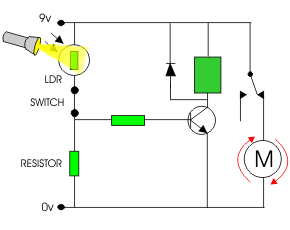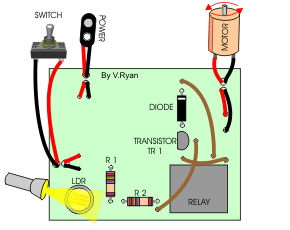Robot voice circuit circuit diagram

Some flexibility in the playback mode allows individual messages to be linked together; each recorded message is terminated by an EOM (End Of Message) flag when it is stored in the chip. Instead of storing complete phrases like ‘obstacle ahead’ for example it is more efficient to store ‘obstacle’ then ‘ahead’, ‘to the right’, ‘to the left’ and ‘behind’ and likewise for numbers ‘one’, ‘two’, ‘hundred’ ‘point’ etc allows voicing of the complete range of numbers from these basic elements.
The minimum playback circuit shown in uses the A0, PD, /CE and /EOM signals interfaced to the robot microcontroller. For playback PD is reset to ‘0’ and to play the first message a low pulse is given on /CE. With A0 at ‘0’ playback occurs at normal speed but with A0 at ‘1’ the chip enters ‘fast forward’ mode where it advances through the message at 800 times its normal playback speed. When the third message needs to follow the first for example, the processor sets A0 to ‘1’ and pulses /CE low to fast-forward through the second message, waiting for the /EOM flag to go low. Once this occurs A0 is reset to ‘0’ and a low pulse on /CE plays back the third message.
The /EOM output pulse can be less than 10 ms wide so it is better to use it to interrupt the processor rather than just poll its status.





